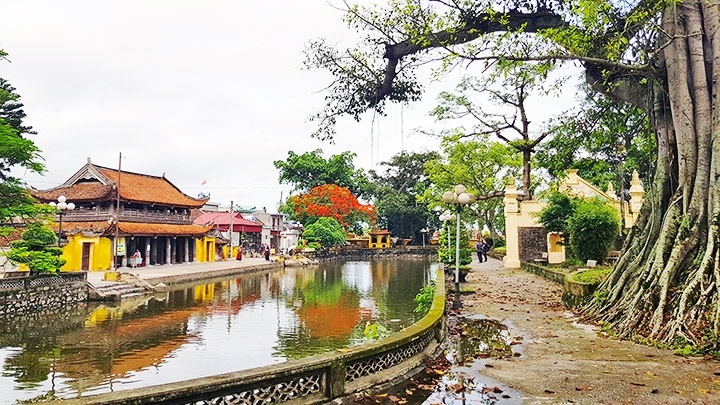After a flood in 1611, the pagoda was relocated to Hanh Thien village, Xuan Hong commune, Xuan Truong district, Nam Dinh province.
The pagoda, which was built with a typical architectural style of the Later Le Dynasty, was recognised as a special national relic site. Many ancient historical items, dating back to the 17th century, are still being preserved in the pagoda, such as altars, bells, and Han-scripted books about the pagoda.
During the national resistance war against the French, Keo Hanh Thien pagoda served as a resistance base for revolutionists.
Notably, the pagoda has no abbot, as it has been managed by locals since it was established.
The image of dragons are carved on many architectural details throughout the pagoda.
The pagoda was recognised as a special national relic site in 2016.
Covering 58,000sq.m in Xuan Truong district’s Xuan Hong commune, Keo Hanh Thien is one of the oldest pagodas in Vietnam.
The pagoda is a popular meeting venue of Hanh Thien villagers.
The Keo Hanh Thien Pagoda Festival is held at the end of the ninth lunar month.









